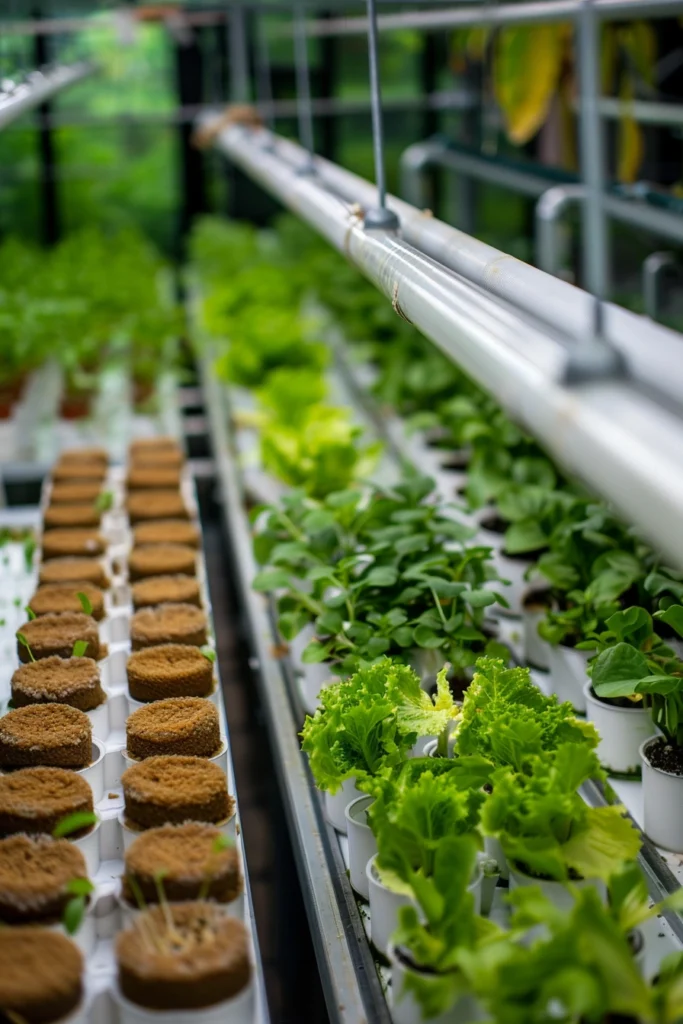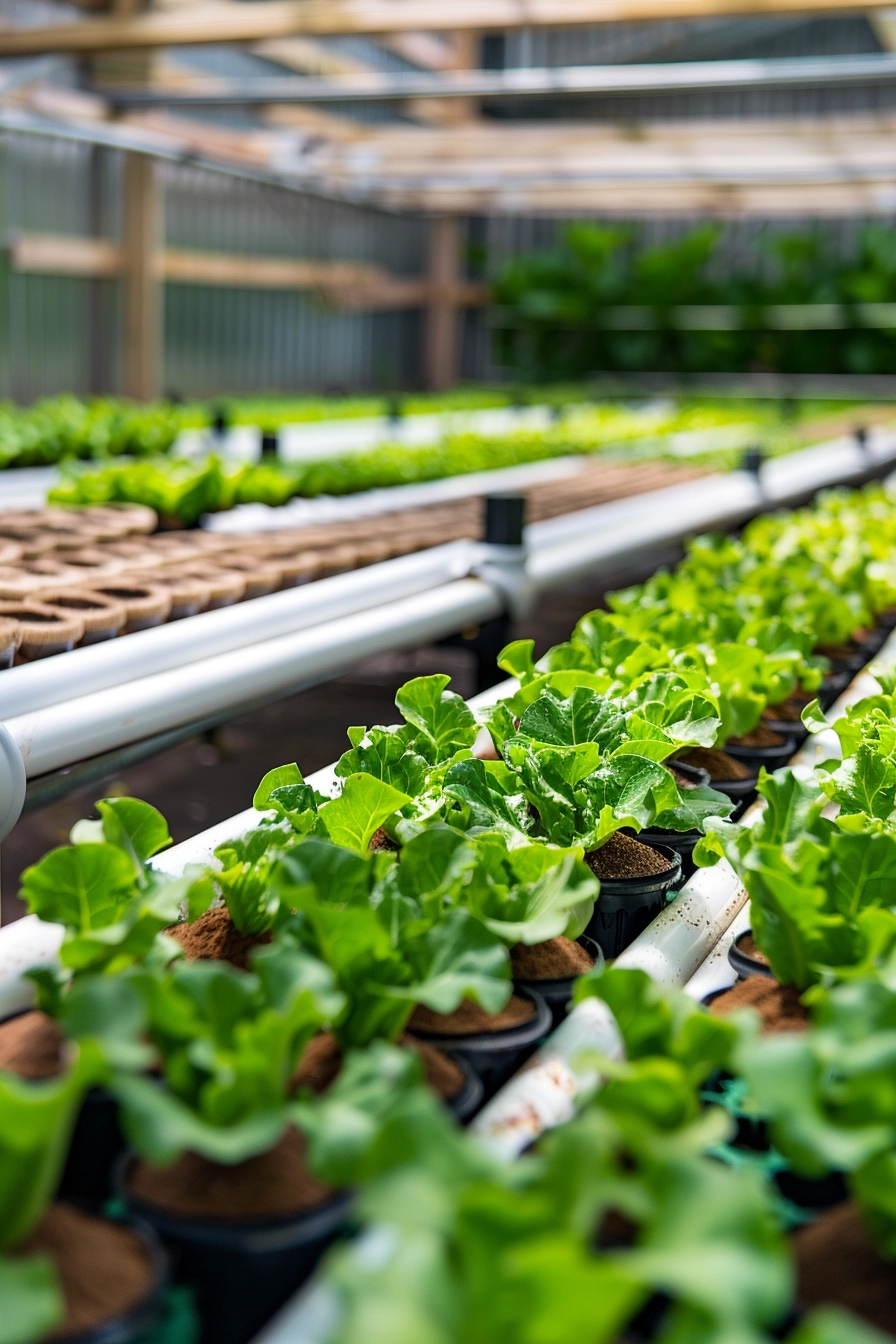Hello, fellow plant lovers! Are you looking to take your indoor gardening game to the next level? If so, you’ve come to the right place. Today, I’ll be sharing some hydroponic gardening tips and explaining the basics of hydroponic systems for houseplants. So, let’s dive in!
Hydroponics is a soilless method of growing plants, which allows for year-round cultivation and offers numerous benefits. Unlike traditional soil-based gardening, hydroponic systems use water-based solutions that require fewer resources. Not only does this result in faster growth and higher yields, but it also provides a clean and controlled environment, making it ideal for indoor plants.
To set up your own hydroponic system, you’ll need a few essentials. First, choose the plants you want to grow. Then, select an appropriate container and fill it with water. Next, you’ll need a way to anchor the plants, such as net pots or grow beds. Don’t forget the nutrients; they are a vital component of hydroponics. Lastly, ensure your plants receive sufficient lighting, as indoor hydroponics requires artificial light sources, such as LED or fluorescent bulbs.
When it comes to choosing the right hydroponic growing medium, there are several options to consider. One popular choice is lightweight expanded clay aggregate (LECA). It provides a sterile and clean environment for plant roots and offers benefits like increased oxygen supply. Another commonly used medium is Rockwool, which has excellent root development properties but can irritate the skin and lungs. Other options include coconut coir, pumice, perlite, and gravel. Each medium has its advantages and disadvantages, so consider factors like water retention and pH impacts when making your selection.
Key Takeaways:
- Hydroponics is a soilless method of growing plants indoors, providing year-round cultivation.
- Setting up a hydroponic system requires plants, a container, water, anchoring materials, nutrients, and proper lighting.
- The choice of hydroponic growing medium is crucial, with options like LECA, Rockwool, coconut coir, pumice, perlite, and gravel.
- Hydroponic systems offer benefits such as faster growth, higher yields, and a controlled nutrient supply.
- For beginners, the wick, water culture, and ebb and flow methods are recommended.
Now that you have a basic understanding of hydroponic systems for houseplants, it’s time to roll up your sleeves and start your own indoor gardening adventure. Happy growing!
Choosing the Right Hydroponic Growing Medium
When it comes to hydroponics, the choice of growing medium is crucial. It plays a pivotal role in providing the necessary support, nutrients, and oxygen to the plant roots. By carefully selecting the right medium, you can ensure optimal growth and health for your hydroponic houseplants.
One widely used and highly effective option is LECA (Lightweight Expanded Clay Aggregate). This lightweight medium replaces traditional soil and provides a clean and sterile environment for plant roots. LECA offers several benefits, including increased oxygen supply to the roots, prevention of rot and decay, and a reduced risk of disease and insect problems. The porous structure of LECA allows for excellent aeration and drainage, promoting healthy root development and overall plant growth.
Another popular hydroponic growing medium is Rockwool. Made by spinning superheated rock and chalk, this fiber-like material offers good root development and oxygen retention properties. It is available in multiple forms such as cubes, slabs, and starter plugs, making it versatile and easy to work with. However, it’s important to note that Rockwool can irritate the skin, eyes, and lungs, so proper precautions should be taken when handling it.
There are other alternatives to consider as well. Coconut coir, derived from the fibers of coconut husks, is an eco-friendly choice that provides excellent water retention while maintaining adequate aeration. Pumice, a volcanic rock, offers good drainage and aeration properties. Perlite, a lightweight volcanic glass, helps increase drainage and prevents compaction. Gravel, commonly used in hydroponic systems, provides stability and support to the plants, allowing for proper root anchorage.
When selecting a hydroponic growing medium, it’s important to consider factors such as water retention, sustainability, and potential impacts on the pH of the system. Each medium has its pros and cons, so it’s essential to choose one that best suits your specific hydroponic setup and the needs of your houseplants.

Benefits of Choosing the Right Hydroponic Growing Medium
By selecting the appropriate hydroponic growing medium, you can ensure an optimal environment for your plants. The right medium provides the necessary support, nutrient retention, and oxygenation needed for healthy root development and overall plant growth.”
In conclusion, choosing the right hydroponic growing medium is vital for success in your indoor gardening endeavors. Whether you opt for LECA, Rockwool, coconut coir, pumice, perlite, or gravel, each medium has unique properties that can benefit your plants. Take the time to evaluate your specific requirements and consider the pros and cons of each medium before making a decision. By providing your houseplants with the ideal hydroponic growing medium, you’ll be well on your way to achieving thriving and vibrant indoor gardens.
Exploring Different Types of Hydroponic Systems
Hydroponic gardening offers a wide range of benefits, making it an attractive option for houseplant enthusiasts. With controlled nutrient supply and optimized growing conditions, hydroponic systems can provide faster growth and higher yields compared to traditional soil-based gardening.
There are various types of hydroponic systems to choose from, each offering unique advantages. For beginners, it is recommended to start with the wick system, water culture, or ebb and flow methods. These systems are easy to set up and maintain, making them ideal for those who are new to hydroponic gardening.
The wick system uses a wick to absorb water and nutrients, delivering them directly to the plants. Water culture hydroponics involves growing plants in deep water culture, with the help of an air pump to oxygenate the roots. Ebb and flow hydroponics, on the other hand, periodically floods and drains the nutrient solution.
Other hydroponic systems include drip hydroponics, N.F.T. (Nutrient Film Technique), and aeroponic systems. Drip hydroponics slowly feeds plants with water and nutrients, N.F.T. systems coat the roots with a nutrient solution, and aeroponic systems spray nutrient water directly onto the roots. These systems offer advanced growing techniques and are popular among experienced hydroponic gardeners.
Regardless of the type of system you choose, hydroponic gardening provides numerous benefits, including efficient use of resources, precise control over nutrient supply, and the ability to grow plants year-round. Whether you’re a beginner or an experienced gardener, exploring hydroponic systems can open up a whole new world of possibilities for your houseplants.

